home
Lee as vandal (Kirby's original story and Lee's changes)
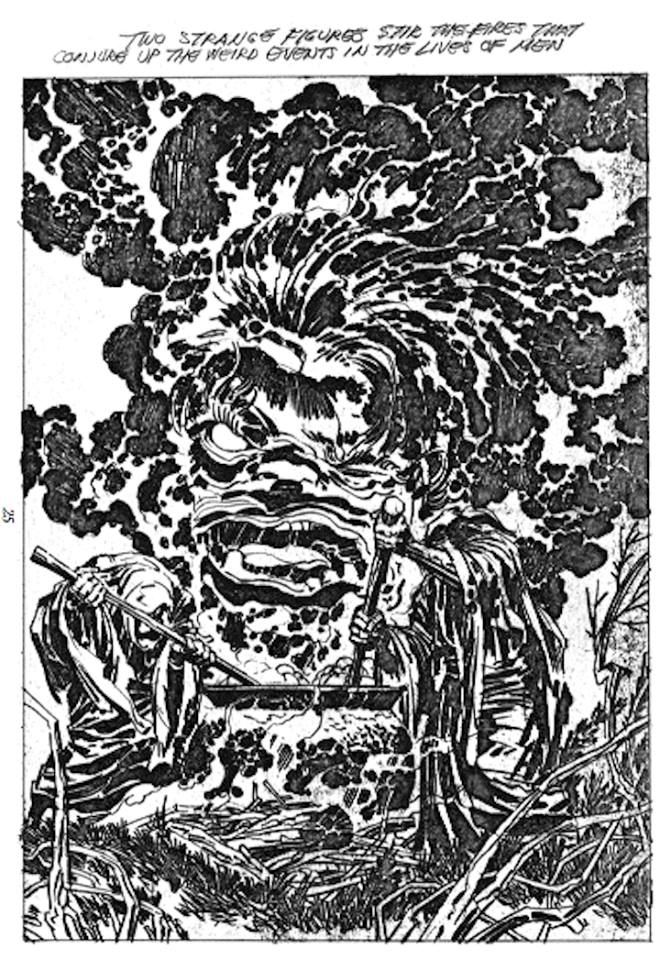

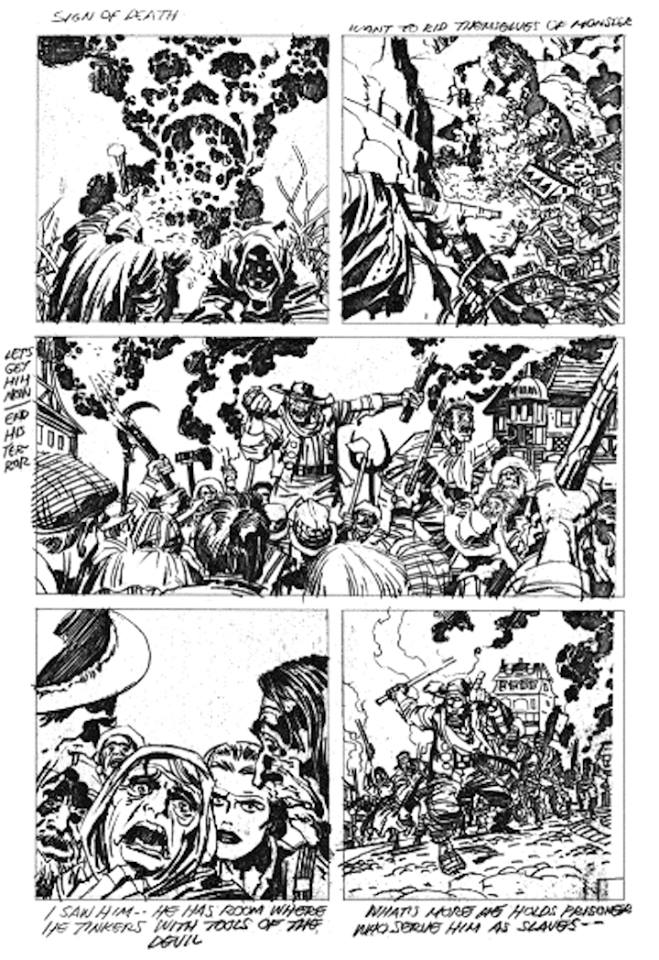

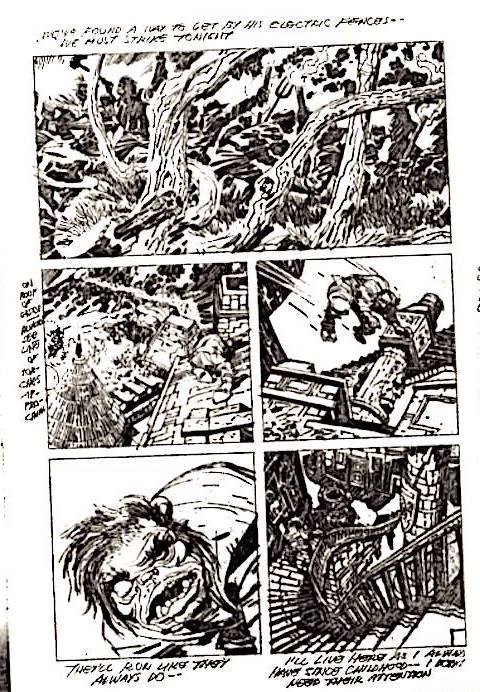
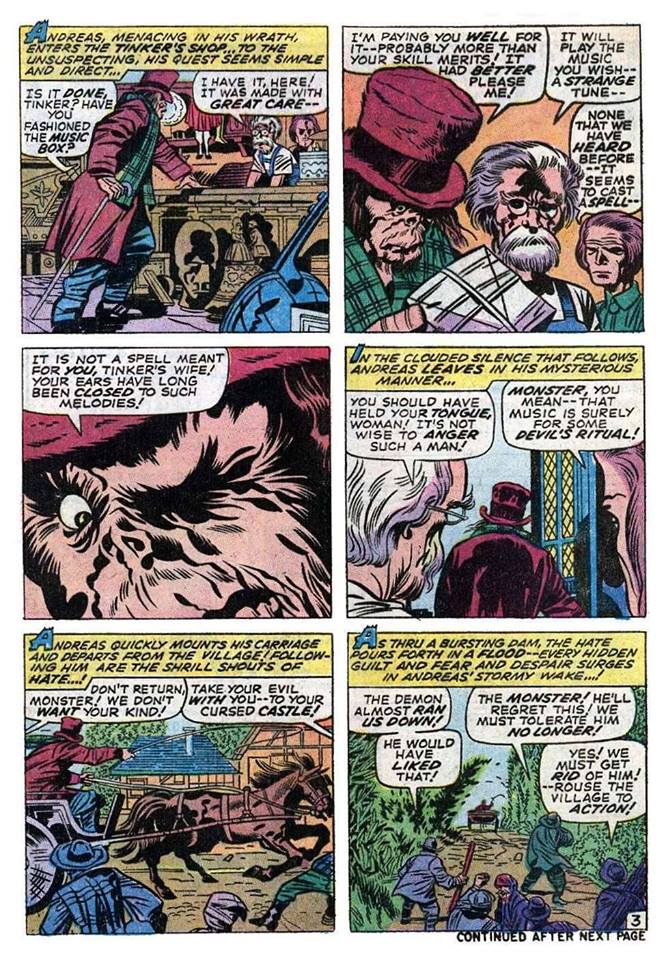
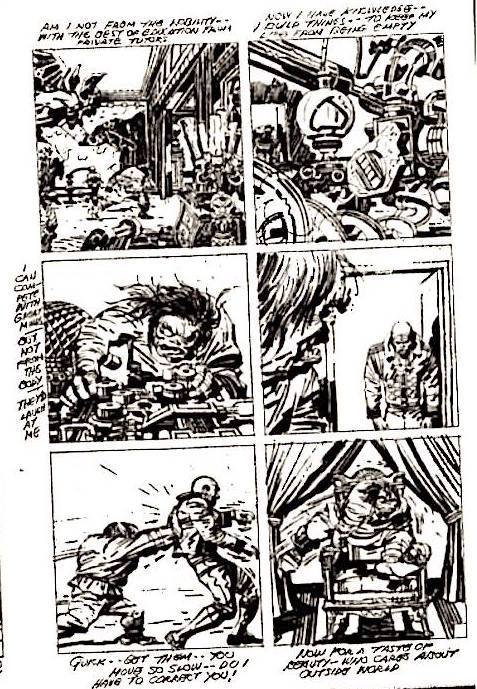
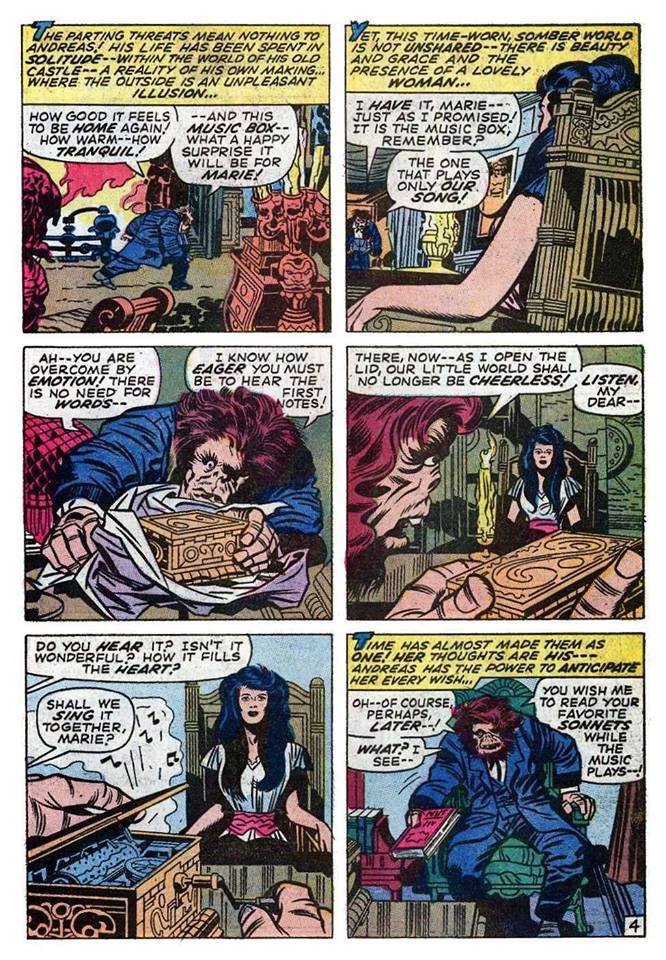
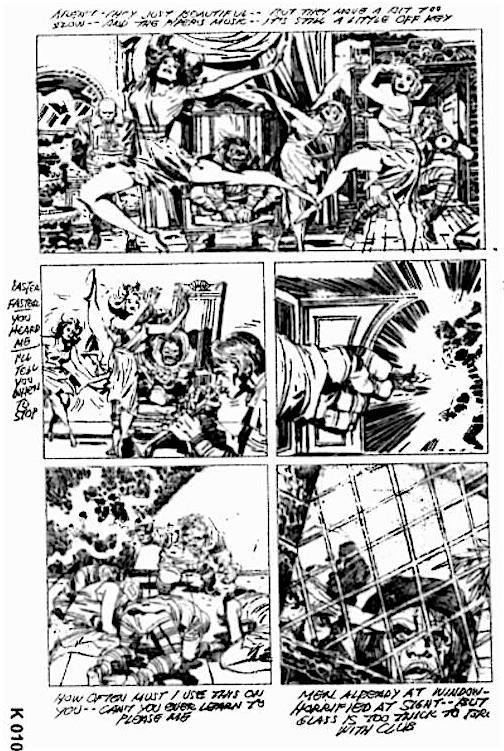
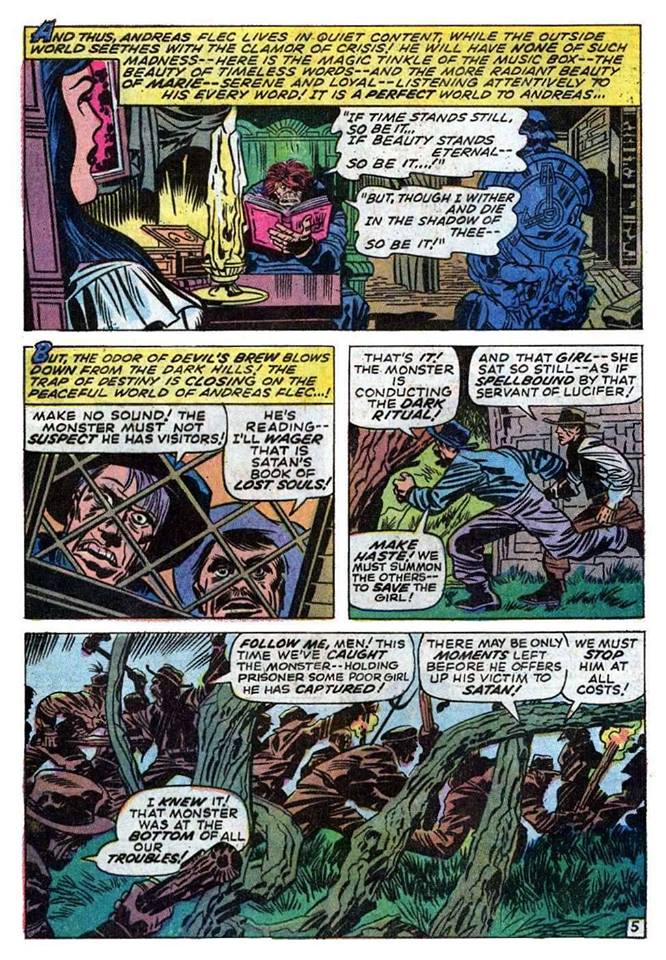
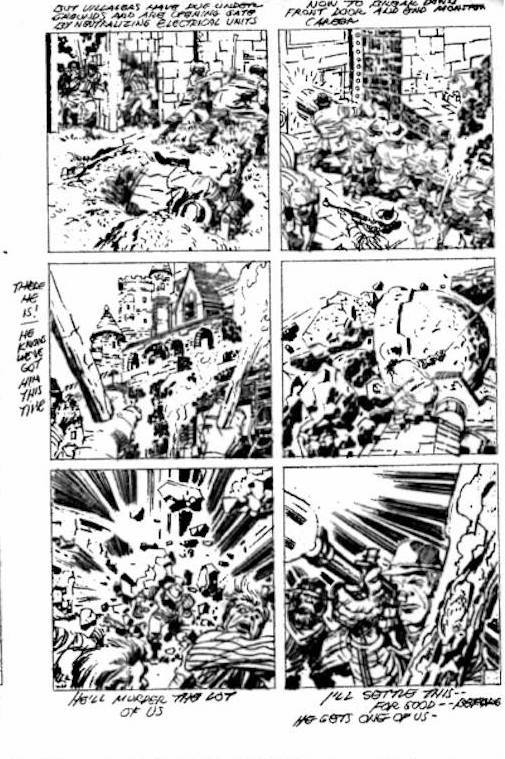
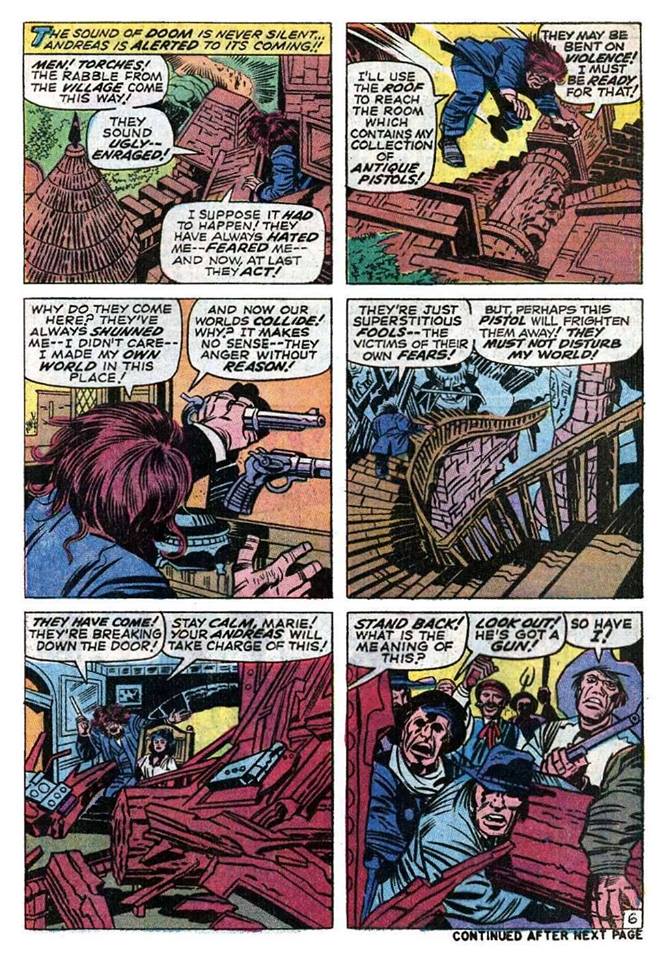
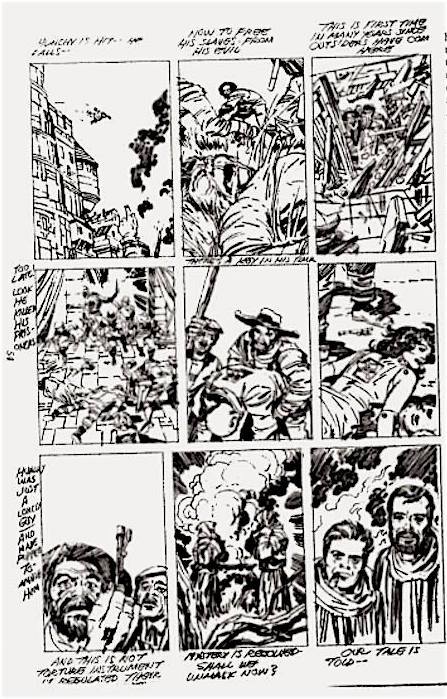
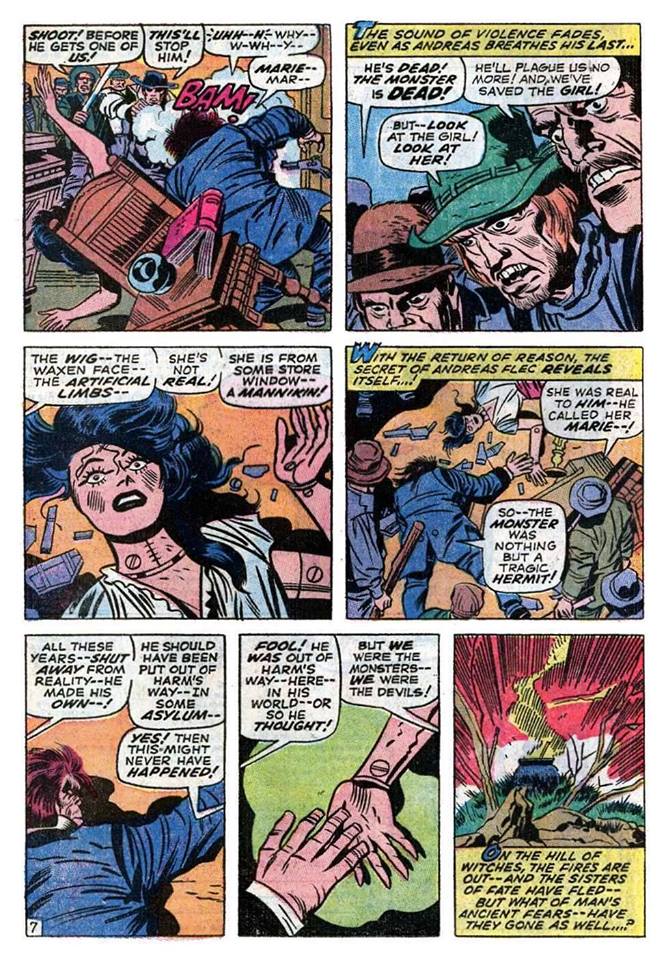 Patrick Ford
26 September 2016
During the last few months before Kirby signed a contract with DC Stan Lee outright rejected two complete stories submitted by Kirby.
I strongly suspect this type of thing was not uncommon even during the early '60s. A couple of things which might indicate Lee's heavy editorial hand are the rejected story intended for HULK #6 which has never been published and evidence which suggests that FF #1 and #3 were heavily reworked after Kirby submitted his stories.
Notes:
1. Sorry about the poor quality of the scans I used for pages 3-7 of Kirby's rejected story. I had to use low resolution scans at the Justia blog.
2. One of the strange things about this story is Kirby created it with the thought Lee would be writing the dialogue. Kirby even suggested to Lee that Lee tone down his "standard pontifical oration."
3. While many pages are completely redone some panels are repurposed. For example panel one on page three of the rejected story ends up as panel 4 on page five of the revised story.
Patrick Ford Better quality scans of the penciled pages can be seen at this link.
https://books.google.ca/books?id=eHM3vW6ogDsC&pg=PA50&lpg=PA50&dq=the+monster+of+moraggia&source=bl&ots=CIO6jn7zFW&sig=qJz_lAtrYZiww82cstp6f5GaB_g&hl=en&sa=X&redir_esc=y#v=onepage&q=the%20monster%20of%20moraggia&f=false
Chris Tolworthy: That is just beautiful. Beautiful.
Chris Tolworthy How can anybody read both versions and claim that Stan was anything other than a vandal? Given the final panel, and Jack's comment about the dialog, I wonder if Stan rejected it because he thought it was a personal attack? And if so, Stan did far more to embarrass himself by changing it: he's like a dictator who orders great art to be destroyed because he does not understand it, but vaguely suspects he is being made fun of. Heck, he's not acting LIKE that, that is precisely what he was and what he did.
Even the parts that survive, like the images of the monster leaping from the tower, and the frame with the stairs, are damaged by overly verbose dialog hiding the details.
This reminds me of one of Stan's favourite original ideas, one of those things he kept coming back to: publishing photo books (of movie monsters, celebrities, etc) with his own uninspired captions: the "You Don't Say" series. I think Stan missed his vocation. He was born to be a vandal, finding anything that people liked looking at, anything that somebody else had spent years to develop, and defacing it with his own dumbed down version then writing his name really big with a spray can.
I didn't think my opinion of Stan could sink any lower, but he can still surprise me.
Patrick Ford: Lee also tampered with Steranko's cover and story for TOWER OF SHADOWS at this time. And Lee completely rejected another Steranko story "Dante's Inferno" which remains unpublished.
There is a clear pattern with Lee. He would tolerate and condone hack work. He had all sorts of problems with truly creative people.
Chris Tolworthy: Lee is still a fascinating character though. I continue to see parallels with Joseph Smith, founder of Mormonism. (Any faithful Mormons reading this may want to look away now.) Yesterday I was listening to the latest installment of "Naked Mormonism", a year by year account of the history of the church. Episode 38 has got to 1837, when Smith's actions caused his empire to almost collapse, yet somehow he survived. http://nakedmormonismpodcast.com/episodes.html The last third of the episode is a discussion of how such a transparent fraud could get away with it, and see his following actually grow? Why couldn't people see that everything Smith said was false? The answer is simple: he had a lifetime of experience with deflecting blame. This came from his early trasure digging days: treasure digging never worked, yet he always persuaded people that next time it would. Hius whole skill was in being an excellent speaker. So he could take credit, shift blame, undermine threats, and do whatever it took to come up smelling of roses, at least to enough people to ensure he lived like a king. Confidence tricksters focus all their energy on making people like them. Why was that hard for me to understand?
Mark Ricard: Interesting analogy Chris.
Patrick Ford: Stan Lee and Joseph Smith. The Duke and the Dauphin.
http://www.pbs.org/marktwain/learnmore/writings_royal.html
Patrick Ford
26 September 2016
During the last few months before Kirby signed a contract with DC Stan Lee outright rejected two complete stories submitted by Kirby.
I strongly suspect this type of thing was not uncommon even during the early '60s. A couple of things which might indicate Lee's heavy editorial hand are the rejected story intended for HULK #6 which has never been published and evidence which suggests that FF #1 and #3 were heavily reworked after Kirby submitted his stories.
Notes:
1. Sorry about the poor quality of the scans I used for pages 3-7 of Kirby's rejected story. I had to use low resolution scans at the Justia blog.
2. One of the strange things about this story is Kirby created it with the thought Lee would be writing the dialogue. Kirby even suggested to Lee that Lee tone down his "standard pontifical oration."
3. While many pages are completely redone some panels are repurposed. For example panel one on page three of the rejected story ends up as panel 4 on page five of the revised story.
Patrick Ford Better quality scans of the penciled pages can be seen at this link.
https://books.google.ca/books?id=eHM3vW6ogDsC&pg=PA50&lpg=PA50&dq=the+monster+of+moraggia&source=bl&ots=CIO6jn7zFW&sig=qJz_lAtrYZiww82cstp6f5GaB_g&hl=en&sa=X&redir_esc=y#v=onepage&q=the%20monster%20of%20moraggia&f=false
Chris Tolworthy: That is just beautiful. Beautiful.
Chris Tolworthy How can anybody read both versions and claim that Stan was anything other than a vandal? Given the final panel, and Jack's comment about the dialog, I wonder if Stan rejected it because he thought it was a personal attack? And if so, Stan did far more to embarrass himself by changing it: he's like a dictator who orders great art to be destroyed because he does not understand it, but vaguely suspects he is being made fun of. Heck, he's not acting LIKE that, that is precisely what he was and what he did.
Even the parts that survive, like the images of the monster leaping from the tower, and the frame with the stairs, are damaged by overly verbose dialog hiding the details.
This reminds me of one of Stan's favourite original ideas, one of those things he kept coming back to: publishing photo books (of movie monsters, celebrities, etc) with his own uninspired captions: the "You Don't Say" series. I think Stan missed his vocation. He was born to be a vandal, finding anything that people liked looking at, anything that somebody else had spent years to develop, and defacing it with his own dumbed down version then writing his name really big with a spray can.
I didn't think my opinion of Stan could sink any lower, but he can still surprise me.
Patrick Ford: Lee also tampered with Steranko's cover and story for TOWER OF SHADOWS at this time. And Lee completely rejected another Steranko story "Dante's Inferno" which remains unpublished.
There is a clear pattern with Lee. He would tolerate and condone hack work. He had all sorts of problems with truly creative people.
Chris Tolworthy: Lee is still a fascinating character though. I continue to see parallels with Joseph Smith, founder of Mormonism. (Any faithful Mormons reading this may want to look away now.) Yesterday I was listening to the latest installment of "Naked Mormonism", a year by year account of the history of the church. Episode 38 has got to 1837, when Smith's actions caused his empire to almost collapse, yet somehow he survived. http://nakedmormonismpodcast.com/episodes.html The last third of the episode is a discussion of how such a transparent fraud could get away with it, and see his following actually grow? Why couldn't people see that everything Smith said was false? The answer is simple: he had a lifetime of experience with deflecting blame. This came from his early trasure digging days: treasure digging never worked, yet he always persuaded people that next time it would. Hius whole skill was in being an excellent speaker. So he could take credit, shift blame, undermine threats, and do whatever it took to come up smelling of roses, at least to enough people to ensure he lived like a king. Confidence tricksters focus all their energy on making people like them. Why was that hard for me to understand?
Mark Ricard: Interesting analogy Chris.
Patrick Ford: Stan Lee and Joseph Smith. The Duke and the Dauphin.
http://www.pbs.org/marktwain/learnmore/writings_royal.html
home













 Patrick Ford
26 September 2016
During the last few months before Kirby signed a contract with DC Stan Lee outright rejected two complete stories submitted by Kirby.
I strongly suspect this type of thing was not uncommon even during the early '60s. A couple of things which might indicate Lee's heavy editorial hand are the rejected story intended for HULK #6 which has never been published and evidence which suggests that FF #1 and #3 were heavily reworked after Kirby submitted his stories.
Notes:
1. Sorry about the poor quality of the scans I used for pages 3-7 of Kirby's rejected story. I had to use low resolution scans at the Justia blog.
2. One of the strange things about this story is Kirby created it with the thought Lee would be writing the dialogue. Kirby even suggested to Lee that Lee tone down his "standard pontifical oration."
3. While many pages are completely redone some panels are repurposed. For example panel one on page three of the rejected story ends up as panel 4 on page five of the revised story.
Patrick Ford Better quality scans of the penciled pages can be seen at this link.
https://books.google.ca/books?id=eHM3vW6ogDsC&pg=PA50&lpg=PA50&dq=the+monster+of+moraggia&source=bl&ots=CIO6jn7zFW&sig=qJz_lAtrYZiww82cstp6f5GaB_g&hl=en&sa=X&redir_esc=y#v=onepage&q=the%20monster%20of%20moraggia&f=false
Chris Tolworthy: That is just beautiful. Beautiful.
Chris Tolworthy How can anybody read both versions and claim that Stan was anything other than a vandal? Given the final panel, and Jack's comment about the dialog, I wonder if Stan rejected it because he thought it was a personal attack? And if so, Stan did far more to embarrass himself by changing it: he's like a dictator who orders great art to be destroyed because he does not understand it, but vaguely suspects he is being made fun of. Heck, he's not acting LIKE that, that is precisely what he was and what he did.
Even the parts that survive, like the images of the monster leaping from the tower, and the frame with the stairs, are damaged by overly verbose dialog hiding the details.
This reminds me of one of Stan's favourite original ideas, one of those things he kept coming back to: publishing photo books (of movie monsters, celebrities, etc) with his own uninspired captions: the "You Don't Say" series. I think Stan missed his vocation. He was born to be a vandal, finding anything that people liked looking at, anything that somebody else had spent years to develop, and defacing it with his own dumbed down version then writing his name really big with a spray can.
I didn't think my opinion of Stan could sink any lower, but he can still surprise me.
Patrick Ford: Lee also tampered with Steranko's cover and story for TOWER OF SHADOWS at this time. And Lee completely rejected another Steranko story "Dante's Inferno" which remains unpublished.
There is a clear pattern with Lee. He would tolerate and condone hack work. He had all sorts of problems with truly creative people.
Chris Tolworthy: Lee is still a fascinating character though. I continue to see parallels with Joseph Smith, founder of Mormonism. (Any faithful Mormons reading this may want to look away now.) Yesterday I was listening to the latest installment of "Naked Mormonism", a year by year account of the history of the church. Episode 38 has got to 1837, when Smith's actions caused his empire to almost collapse, yet somehow he survived. http://nakedmormonismpodcast.com/episodes.html The last third of the episode is a discussion of how such a transparent fraud could get away with it, and see his following actually grow? Why couldn't people see that everything Smith said was false? The answer is simple: he had a lifetime of experience with deflecting blame. This came from his early trasure digging days: treasure digging never worked, yet he always persuaded people that next time it would. Hius whole skill was in being an excellent speaker. So he could take credit, shift blame, undermine threats, and do whatever it took to come up smelling of roses, at least to enough people to ensure he lived like a king. Confidence tricksters focus all their energy on making people like them. Why was that hard for me to understand?
Mark Ricard: Interesting analogy Chris.
Patrick Ford: Stan Lee and Joseph Smith. The Duke and the Dauphin.
http://www.pbs.org/marktwain/learnmore/writings_royal.html
Patrick Ford
26 September 2016
During the last few months before Kirby signed a contract with DC Stan Lee outright rejected two complete stories submitted by Kirby.
I strongly suspect this type of thing was not uncommon even during the early '60s. A couple of things which might indicate Lee's heavy editorial hand are the rejected story intended for HULK #6 which has never been published and evidence which suggests that FF #1 and #3 were heavily reworked after Kirby submitted his stories.
Notes:
1. Sorry about the poor quality of the scans I used for pages 3-7 of Kirby's rejected story. I had to use low resolution scans at the Justia blog.
2. One of the strange things about this story is Kirby created it with the thought Lee would be writing the dialogue. Kirby even suggested to Lee that Lee tone down his "standard pontifical oration."
3. While many pages are completely redone some panels are repurposed. For example panel one on page three of the rejected story ends up as panel 4 on page five of the revised story.
Patrick Ford Better quality scans of the penciled pages can be seen at this link.
https://books.google.ca/books?id=eHM3vW6ogDsC&pg=PA50&lpg=PA50&dq=the+monster+of+moraggia&source=bl&ots=CIO6jn7zFW&sig=qJz_lAtrYZiww82cstp6f5GaB_g&hl=en&sa=X&redir_esc=y#v=onepage&q=the%20monster%20of%20moraggia&f=false
Chris Tolworthy: That is just beautiful. Beautiful.
Chris Tolworthy How can anybody read both versions and claim that Stan was anything other than a vandal? Given the final panel, and Jack's comment about the dialog, I wonder if Stan rejected it because he thought it was a personal attack? And if so, Stan did far more to embarrass himself by changing it: he's like a dictator who orders great art to be destroyed because he does not understand it, but vaguely suspects he is being made fun of. Heck, he's not acting LIKE that, that is precisely what he was and what he did.
Even the parts that survive, like the images of the monster leaping from the tower, and the frame with the stairs, are damaged by overly verbose dialog hiding the details.
This reminds me of one of Stan's favourite original ideas, one of those things he kept coming back to: publishing photo books (of movie monsters, celebrities, etc) with his own uninspired captions: the "You Don't Say" series. I think Stan missed his vocation. He was born to be a vandal, finding anything that people liked looking at, anything that somebody else had spent years to develop, and defacing it with his own dumbed down version then writing his name really big with a spray can.
I didn't think my opinion of Stan could sink any lower, but he can still surprise me.
Patrick Ford: Lee also tampered with Steranko's cover and story for TOWER OF SHADOWS at this time. And Lee completely rejected another Steranko story "Dante's Inferno" which remains unpublished.
There is a clear pattern with Lee. He would tolerate and condone hack work. He had all sorts of problems with truly creative people.
Chris Tolworthy: Lee is still a fascinating character though. I continue to see parallels with Joseph Smith, founder of Mormonism. (Any faithful Mormons reading this may want to look away now.) Yesterday I was listening to the latest installment of "Naked Mormonism", a year by year account of the history of the church. Episode 38 has got to 1837, when Smith's actions caused his empire to almost collapse, yet somehow he survived. http://nakedmormonismpodcast.com/episodes.html The last third of the episode is a discussion of how such a transparent fraud could get away with it, and see his following actually grow? Why couldn't people see that everything Smith said was false? The answer is simple: he had a lifetime of experience with deflecting blame. This came from his early trasure digging days: treasure digging never worked, yet he always persuaded people that next time it would. Hius whole skill was in being an excellent speaker. So he could take credit, shift blame, undermine threats, and do whatever it took to come up smelling of roses, at least to enough people to ensure he lived like a king. Confidence tricksters focus all their energy on making people like them. Why was that hard for me to understand?
Mark Ricard: Interesting analogy Chris.
Patrick Ford: Stan Lee and Joseph Smith. The Duke and the Dauphin.
http://www.pbs.org/marktwain/learnmore/writings_royal.html